Need to Hoist Materials? Consider Using a Telehandler Instead of a Crane
Words and Photos: John Boehme, Senior Product Manager – Telehandlers, JLG
Expanding the versatility of telehandlers is all about the different types of attachments that can be used on the front of the machines. With fork-mounted, coupler-mounted and permanent-mounted attachment options, owners and operators can use telehandlers to do a myriad of tasks by simply changing the attachment.
For example, by switching out these tools, telehandlers can be used for more than just lifting applications — they excel at hoisting (and material handling) tasks, too, when equipped with a boom-mounted lifting lug attachment (also referred to as hooks or clevises). This type of attachment allows operators to put a chain or straps through it to efficiently handle suspended loads (aka hoist materials).
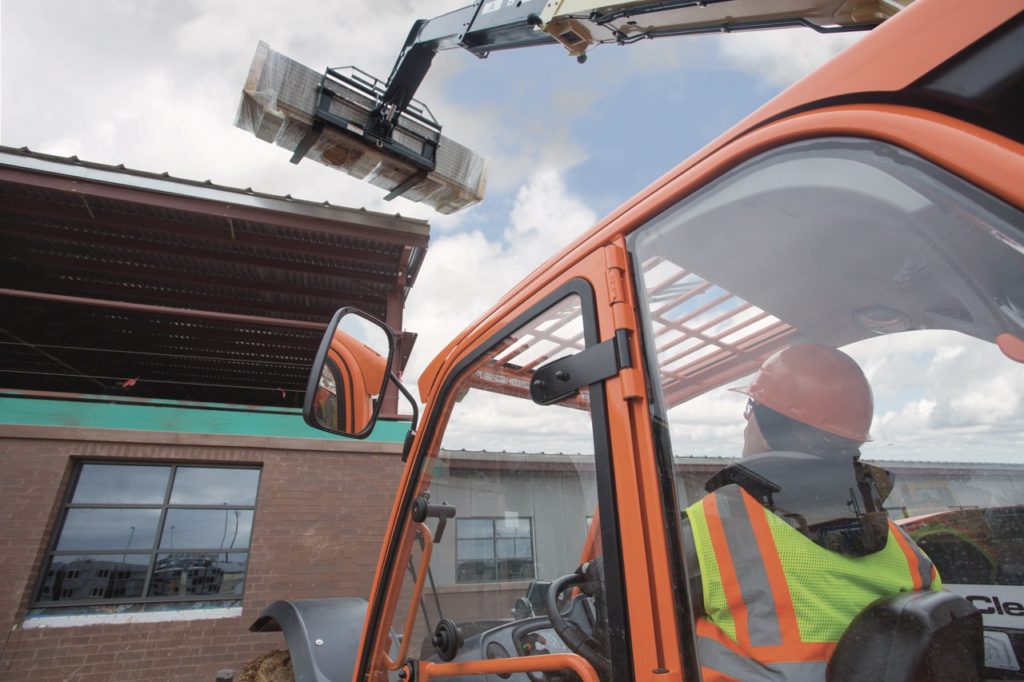
Because they are purpose-built to move heavy objects with great maneuverability, using a telehandler for this type of material handling work is often more cost-effective than bringing in a crane. Let’s take a closer look at how…
What different considerations go into selecting a telehandler for hoisting or material handling versus lifting?
The most important thing to do before selecting a telehandler for hoisting or material handling is knowing two things: 1) what is the work that needs to be completed, and 2) where will that work be done.
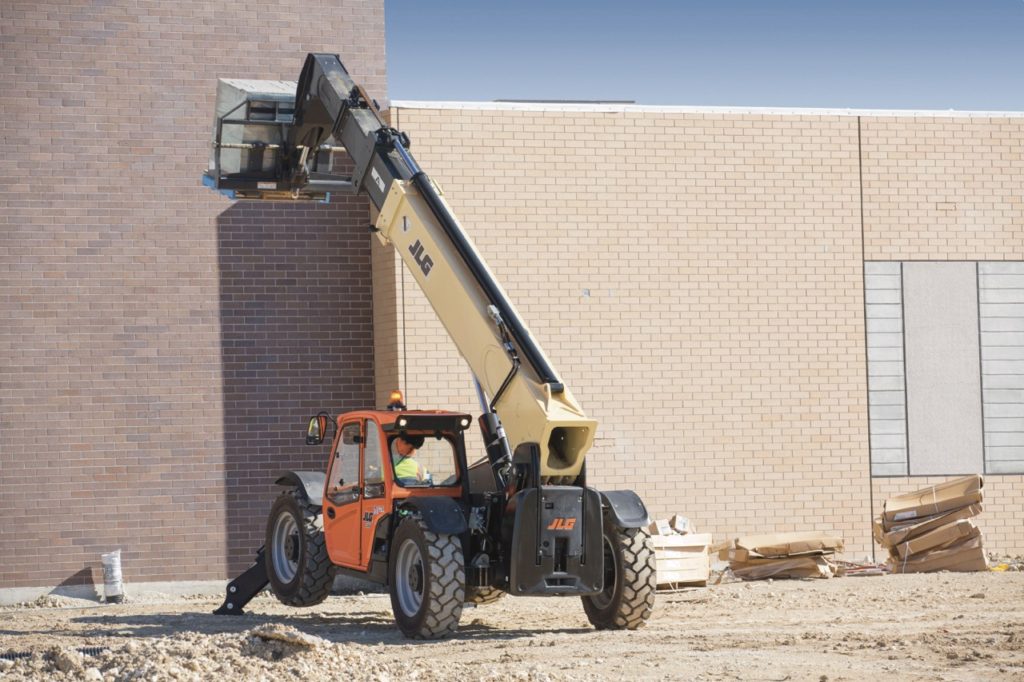
This starts with calculating the “maximum pick” that the machine will need to handle, which can be done in three steps:
- Identify the maximum weight of the load that needs to be lifted and handled (i.e., how heavy the heaviest object/material is that needs to be picked up). Make sure the telehandler has enough capacity to support all of the lifts.
- Figure out the maximum angle the machine needs to be able to lift and place the load (i.e., what’s the furthest up, over and/or out that the telehandler needs to reach). It is important to know how much space is available on the job site for maneuvering and positioning the load. Depending on the site, trade-offs may need to be made when selecting a telehandler’s size versus its capacity. Space restrictions will influence not only the size of the telehandler but also the style. For example, if the machine needs to feed the material from a stationary position, similar to how a crane would perform on-site, a rotating telehandler should be considered.
- Determine the maximum height that the load needs to be placed (i.e., how high does the load need to be lifted)
Armed with these measurements, users can then refer to machine load charts to guide them in selecting the appropriate telehandler. It is important to note that all telehandler attachments have their own load chart, which should always be referenced before use.
Once a model is chosen, it’s important to consider what attachments are needed to complete the work. Telehandlers are called “tool carriers” for a reason — they can handle a wide range of hoisting and material handling applications because of the large variety of attachments they can be equipped with, from buckets, carriages and truss booms/lift hooks to specialty attachments like tire handlers.
Understanding the nature of the work to be accomplished and the capabilities of each type of attachment the machine can be fitted with is crucial to safe and efficient use. This means knowing whether a load needs to be picked or placed. Does the job require loose material to be scooped or a load suspended? Does the operator need to grapple loose material or pipes? Answering these questions will help owners/operators select the appropriate size and type of attachments needed.
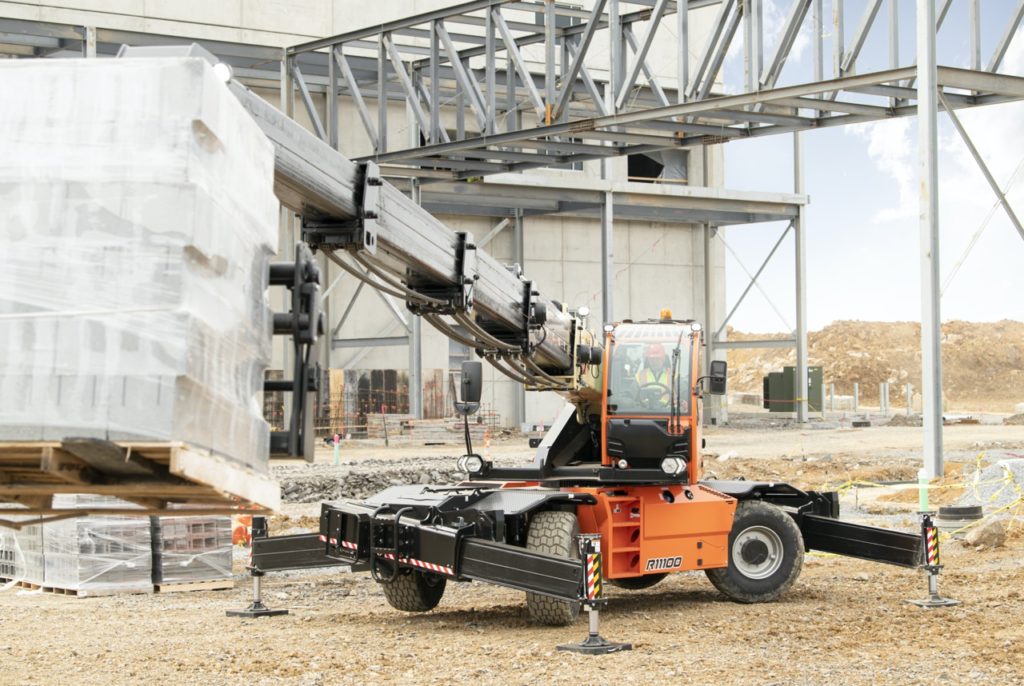
What different types of attachments are available for hoisting and material handling applications with telehandlers?
Attachments for handling suspended loads include jibs to give operators extra length and options for hoisting and handling materials that aren’t necessarily heavy but are big and bulky — yet need to be set precisely. An example of this would be truss boom attachments, and as mentioned previously, lifting lugs are good attachments for this type of application too.
All devices have a load chart, and it is critical to reference the attachment’s load chart before use. This will give owners/operators very important information about how the machine will operate with the specific tool attached, including details like capacity and range of motion. To get the right machine to do the work, always read and understand the load chart associated with the machine and the attachment.
When is it ideal to use a telehandler as a hoisting device instead of other types of equipment?
There are two answers to this question.
1) Telehandlers (like JLG and SkyTrak® fixed-boom and rotating models) are ideal for use when operators need to cost-effectively lift heavy loads and move them around a job site. Cranes are very costly to rent, requiring a certified crane operator to go along with the machine, whereas multiple operators can be trained to run a telehandler.
2) Telehandlers are good options to consider when job site space restrictions would significantly limit a crane’s ability to handle the suspended loads. Telehandlers are able to place materials at height with the same as, or even more, precision than a crane, especially when equipped with remote boom control, which allows the operator to work outside the cab for better visibility of the load, opening up opportunities for owners/operators to choose a smaller, less expensive machine versus a crane to get the work done.
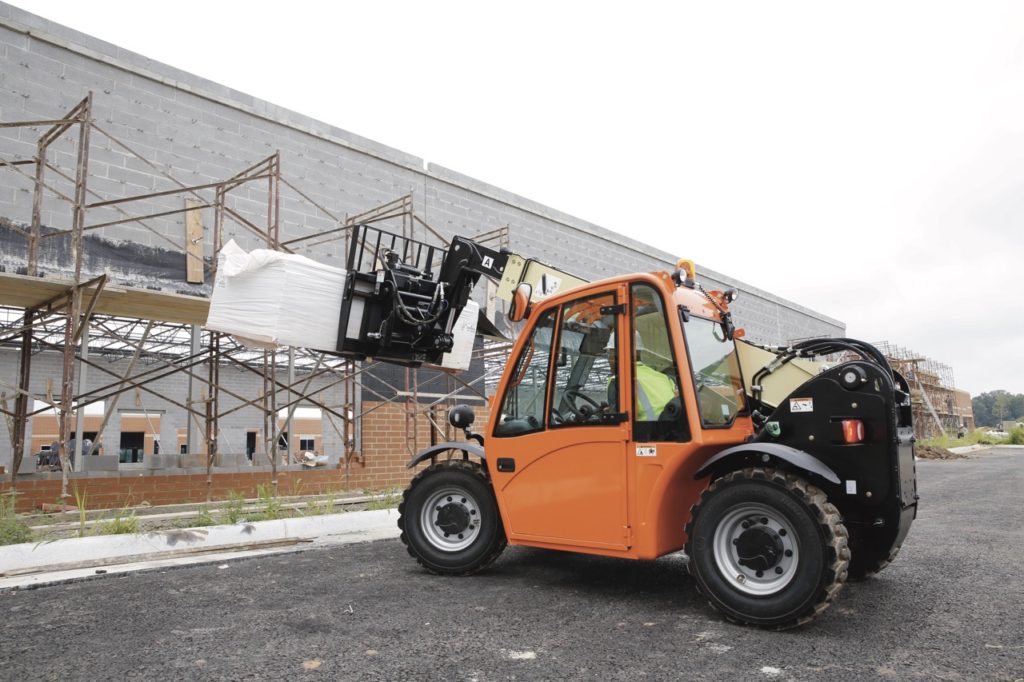
To best determine if a telehandler can serve as an appropriate substitute for a crane, consult the machine’s load chart. It features an X and Y axis for distance from the front tires and the height needed for placement. Using the load chart and a tape measure, a determination can be made to see if the machine can safely place the load.
Or owners/operators can also go through a dry run procedure or a practice run of the lift or pick being performed with no load on the forks to test if it will work. Using the indicators on the side of the boom, operators can complete a dry run placement, then compare it to the load chart to determine if the telehandler chosen can safely place the load.
What safety concerns must be taken into consideration when using a telehandler for hoisting or material handling rather than lifting?
As when operating any machine, it is important to always reference the model’s Operation and Safety Manual to determine what safety concerns must be taken into consideration. Before using a telehandler for handling suspended loads, consult the machine’s load chart in this manual to understand how to safely and productively hoist and handle loads.
Other safety considerations need to include who else will be working near the suspended load. For example, if the job requires using riggers (i.e., people tethered to and helping to control the suspended load to keep the material from spinning during placement), it is important at all times for the operator to know where these people are working and see what they are doing. In fact, a clear line of sight and full visibility of the entire pick is extremely important, including the hoisted material, people in the area and infrastructure nearby.
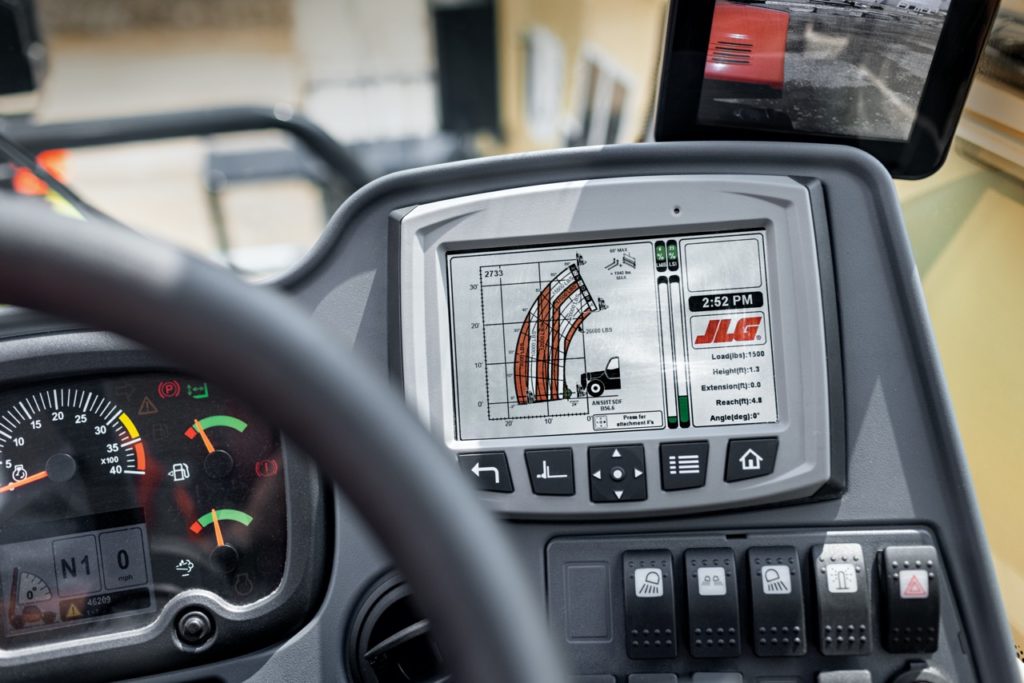
Also, operators should work in low gear for better speed and control when moving, turning and/or placing the load.
Finally, consider how the terrain, especially any slopes and potholes on-site, will impact not only the productivity but also the performance of the machine. Going over bumps with a suspended load feels very different from traveling with the boom lowered.